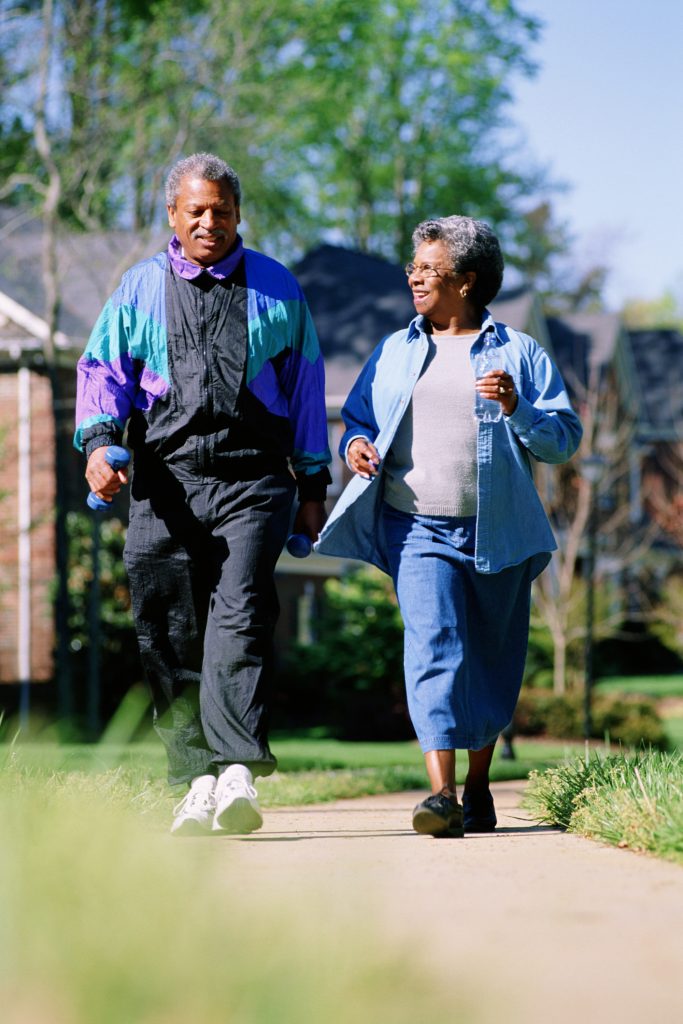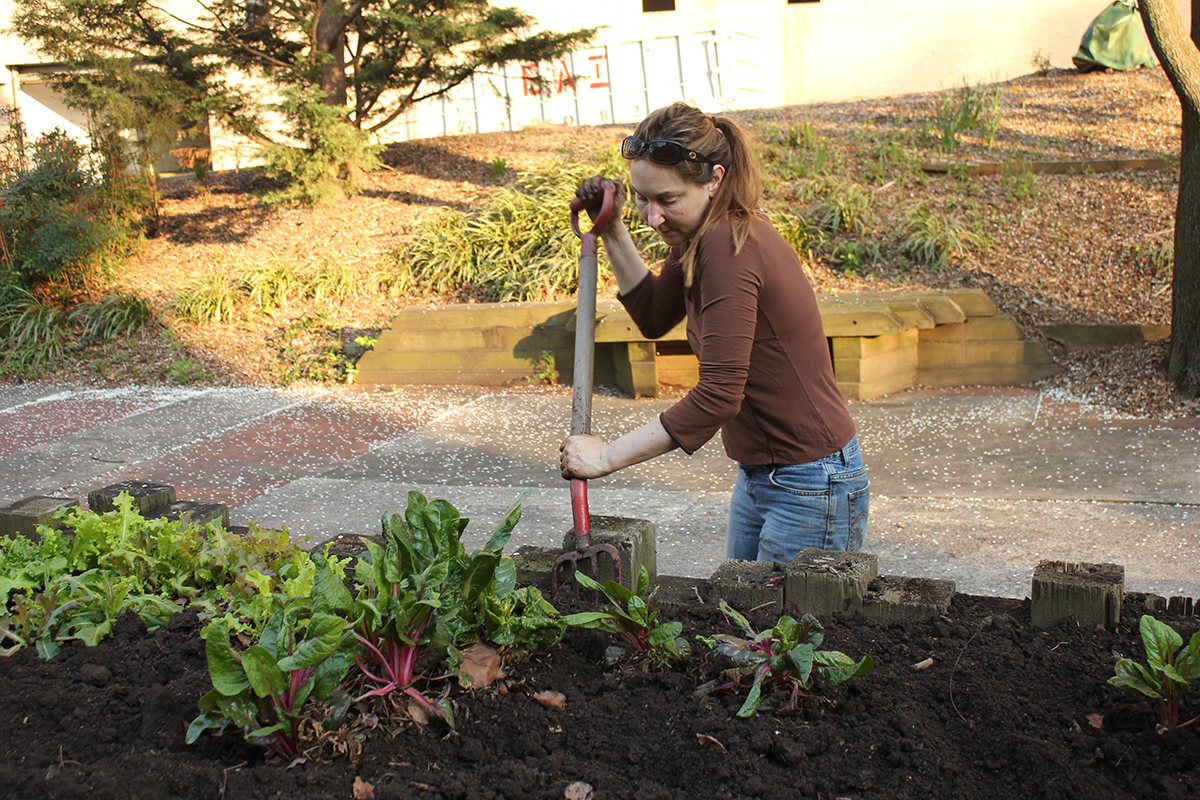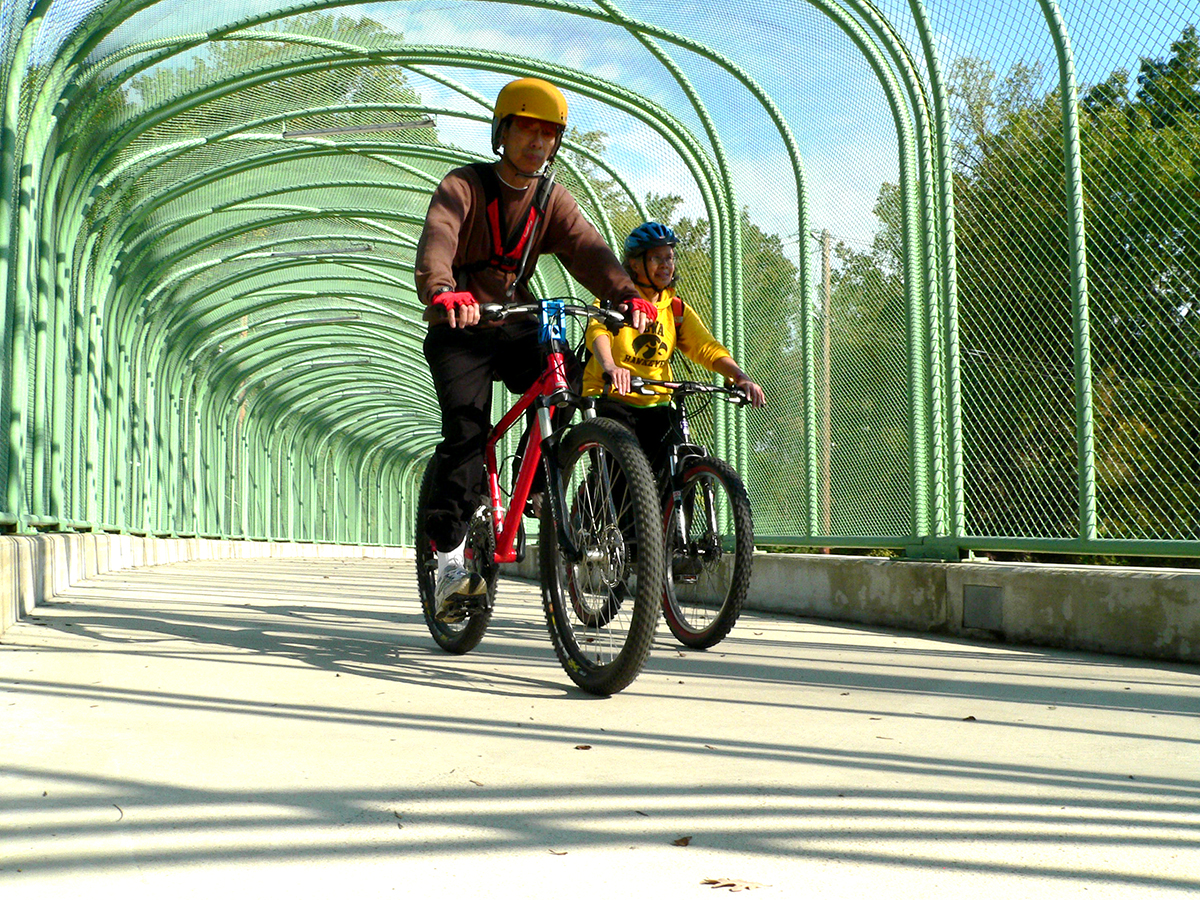New plans for suburban communities focus on health

Recent plans for Montgomery County emphasize walking routes and pedestrian connections within suburban communities.
The suburbs have been blamed for a host of health problems, from depression to obesity. Certainly, the social isolation, dependence on the car and lack of exercise that are often a part of suburban living aren’t good for our mental and physical well-being.
But today’s suburbs – particularly established communities in Montgomery County– are becoming healthier as we plan and build neighborhoods where exercise is part of people’s daily routine. Health is not just a byproduct of how we live. It’s also related to where we live.

Public open spaces, such as Wheaton Regional Park, provide opportunities for kids to play
A healthy environment makes it easier for residents to adopt a healthy lifestyle, whether it is achieved by providing more public parks and bike paths or by reducing air pollution. It means having plans and policies that ensure access to nutritious food, recreation and walkable neighborhoods.
Thinking about the relationship between health and the built environment is not new. In the 19th and 20th centuries, architects and planners in London, Paris and New York joined with public health professionals and social reformers to reduce infectious diseases by designing parks, neighborhoods and clean water systems that improved urban living conditions.
Now the built environment is once again considered an important part of the solution to today’s public health challenges, such as the obesity epidemic.
The ways in which we shape our cities and suburbs ultimately influence the distances people travel to work, the convenience of public transit, whether we can easily shop for healthy foods and have places to exercise, and the safety and attractiveness of neighborhoods.
The Montgomery County Planning Department has begun to implement changes in our policies and practices that focus on health. Our new master plans and zoning ordinance encourage mixed-use, pedestrian and bike-friendly, sustainable communities where residents can easily access homes, stores, offices, parks and transit without the need to get in a car.
Our healthiest plans include the Bicycle Master Plan with its emphasis on low-stress cycling networks; newly updated Recreation Guidelines for a broader range of privately developed fitness, play and sports facilities; and the Bethesda Downtown Sector Plan with its focus on green spaces and sustainability.

Staff members cultivate a community vegetable garden at the Planning Department in Silver Spring.
This shift marks a radical change from the past. Fifty years ago, the population migration from compact, urban centers to lower-density suburbs led to segregation of land uses and extensive roadway construction. This suburban growth is often referred to as “sprawl.”
The decentralized and auto-dependent development patterns typical of many suburbs are now blamed for contributing to the increasingly sedentary lifestyles of Americans —a risk factor for many chronic illnesses.
Today, suburban areas like Montgomery County are becoming denser and more diverse with respect to land uses. We recognize the need to change development patterns so that our communities are supportive of healthy habits.
| Old Suburb Few opportunities to be physically active Separated land uses Wide arterial roads Low density development No connectivity between neighborhoods Few sidewalks Few bikeways Auto dependency Poor access to public transportation Acres of surface parking |
New Suburb Many opportunities to be physically active Work places, shopping and homes within walking and biking distance Compact downtown centers Pedestrian, cycling and transit connections Trails and sidewalks Safe, low stress bicycling networks Making the healthy choice the easy choice Development close to transit Parks, recreation and open space |

Montgomery County’s Bicycle Master Plan aims to provide low-stress, safe cycling paths, such as this bridge for the Rock Creek Hiker-Biker Trail.
Alyce Ortuzar
Park and Planning is silent about the importance of preserving natural resources such as trees and wetlands from development, and apparently supports the current design of the Purple Line despite widespread environmental devastation of these rapidly diminishing natural resources that significantly contribute to our quality of life. These are unacceptable trade-offs that are not necessary but for the apparent influence of the developers.
I just signed a petition to Park and Planning for a sidewalk in Burtonsville the community has been requesting for decades assuring safe access to bus stops.
Park and Planning has been to slow to identify and correct where unsafe streets need sidewalks, crosswalks, and preferable pedestrian-activated stoplights to safely walk and yo access transit and stores. I unsuccessfully testified before Park and Planning to stop combining bikes and walkers on the same trails. For the safety of all users, bikes need dedicated lanes and so do walkers in the county parks. The access does not have to be very wide, and the surfaces should be pavers that direct stormwater to the aquifer.
Park and Planning also ignores best stormwater practices that replace turf grass with native ground cover and pollinator food and habitat that also captures stormwater onsite. But for a very small but wonderful rainscapes area below the tracks at the relatively recently completed county transit center in Silver Spring, most of this huge area is manicured and monocultured turf grass requiring tons of CO2 and toxic chemicals. The rainscapes beneath the tracks is what the entire site should like so residents are educated about the need to replace turf lawns and what our yards should look like, which then also become carbon sinks capturing and storing deadly CO2 from the environment.
Park and Planning has apparently not read the DEP “Rainscapes” brochure that accurately characterizes turf lawns as impervious surfaces. Yet residents are threatened with fines and the destruction of their yards by DHCA if they replace turf grass with Bay friendly vegetation and practices.
When and how will Park and Planning make these vitally important changes? We have no natural resources to spare.
TC
This is great to read, but as I travel around MoCo I’m struck by the number of streets that lack a basic sidewalk. How are kids supposed to learn to ride a bike, play tag or even go for a walk with their parents when such a basic amenity is missing?
Reshaping the suburbs is a great idea to impact public health, but the first step you should consider is getting sidewalks installed. As I understand it, MoCo residents cannot get a sidewalk installed without unanimous support from their neighbors. If true, then you should work to change this law so that only a majority of residents need to ask.